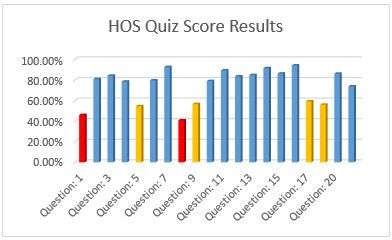
Confusion still persists around basic Hours of Service & Log Book Regulations
posted in Alerts, Blog, Uncategorized by Brian Gray
Confusion still persists around basic Hours of Service & Log Book Regulations
Hours of service rules limit the number of hours a driver can operate a commercial motor vehicle (CMV) and have been the irritant of driver and manager alike for as long as anyone can remember. It should be common knowledge by now for us in the trucking industry to understand that logbook violations are among the easiest violations for an auditor to find during a safety review or roadside inspection.
However, according to results from our latest Hours of Service (HOS) Quiz, even the basic rules are still causing confusion. These results amazed Dave Gray, President of Oregon-based Glostone Trucking Solutions.
“For commercial driving professionals, it amazes me, with as much discussion, argument, auditing, ticketing, out-of-service violations, and general angst there is over driver logs, the degree of confusion that persists with understanding even the basic rules.”
 Since we first posted the quiz in July, we have had over 600 quiz takers that include drivers, dispatchers, fleet managers, owner operators, and compliance professionals across US and Canada. Some companies that have taken the quiz include OOIDA, Pepsi Co, C.H. Robinson, Omnitracs, Atlas World Group, and more. The average score of the 20 question quiz was 74 percent. (Click here to take the quiz)
Since we first posted the quiz in July, we have had over 600 quiz takers that include drivers, dispatchers, fleet managers, owner operators, and compliance professionals across US and Canada. Some companies that have taken the quiz include OOIDA, Pepsi Co, C.H. Robinson, Omnitracs, Atlas World Group, and more. The average score of the 20 question quiz was 74 percent. (Click here to take the quiz)
Among the top questions missed, nearly half the respondents missed questions around the 60 hour/7 day rule, off-duty, and sleeper berth regulations. Surprisingly, 43 percent of responders failed to correctly answer what falls under the “adverse driving conditions” that can extend the maximum driving limit by two hours. Similarly, 25 percent did not correctly answer what emergency situations could temporarily lift hours of service rules.
We understand that there are many regulations around log books and hours of service that many drivers don’t face on a daily basis, like livestock driver exceptions or the 100 air-mile exemption. However, with average driver turnover above 100% and many truck drivers looking to work closer to home, drivers may find themselves driving for a local company that takes advantage of these exemptions and knowing them would prove useful.
Some of your comments about the quiz:
“Missed 1! Did not realize livestock haulers were exempt from 30 minute break. But after thinking about it, it makes sense weather conditions could be really bad for livestock in a 30 minute timeframe.”
“Pretty good quiz. After being primarily in the passenger rules for 11 years I felt pretty good getting 18 right.”
“Great quiz to get a guy thinking.”
“I got 85%. The ones I missed involved local driving and unloading time.”

Log Violations are the number one Driver Violation during an Inspection


In other words, these violations made up nearly 50% of all driver violations at roadside.
How can your prevent these violations? First, make sure your drivers know what is required on their logs (see Part 395.8), and when it has to be filled in. When a driver is stopped for an inspection, the log must be current up to the time at which the driver got behind the wheel.
Trucking companies must educate their drivers about log requirements and when they need to be filled out. In the event that a driver is stopped for inspection, their log must be current with when they began driving. Companies should implement policies that strengthen these requirements so that employees comply.
Not Happy with your Quiz Score? Stay refreshed with our Upcoming Log Book Mastery Course
Our 4 hour Log Book Mastery class will show you how to better understand and self-regulate: Hours of Service rules: 11-14, 60/7, & 70/8 rules; split-sleeper & combined off-duty options; how to check for falsified logs, and more. This class is available online live during the class or as a webinar after the class is over. Sign up today!
Tuition: $99.00







